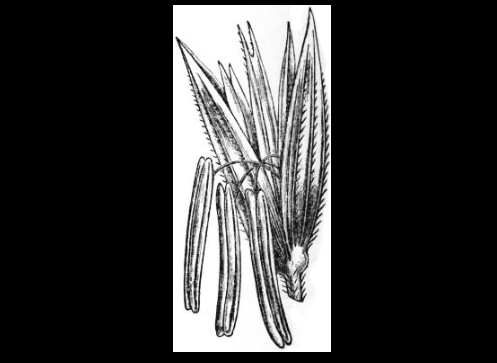Many of the fruits and vegetables that we enjoy today are not necessarily what they were before. Bananas, for example, used to have large hard seeds. But, due to selective breeding and genetic engineering, we can now enjoy big and meaty bananas without having to worry about choking with seeds.

Another example of a food that has been greatly improved by genetic modification is corns. Corns wasn't always the sweet and juicy delicacy that everyone enjoyed. As a matter of fact, they used to look like wheat. But, thanks to agricultural enhancements, farmers, botanists, and plant biologists, the corn was drastically improved unto the kernelly goodness that many feasts upon.
However, it faces another challenge in the modern days. If it isn't able to adapt to a rapidly changing climate, the fruit might lose its place as one of the most "go to" foods all over the world.
To help the vegetable survive in this world full of climate and seasonal uncertainty, a group of scientists from the Cold Spring Harbor Laboratory (CSHL) has been studying the corn's genetic pathways to create a variant that would be able to survive harsh environmental conditions.
Building a Corn One Cell at a Time

CSHL Professor David Jackson worked with Associate Professor Jesse Gillis to study genes involved in corn development. Their teams analyzed thousands of individual cells that make up the developing corn ear. They created the first anatomical map that shows where and when essential genes turn on and off during crucial steps in development.
This map is an important tool for growing better crops.
Jackson points out that humans have been breeding and improving corn for thousands of years. He said:
Ten thousand years ago, corn did not exist, right? There was a wild plant called teosinte. Teosinte itself only makes about 10 seeds. It makes these really tiny ears that don't give much nutrition. In fact, the seeds they make are so tough that they would break your teeth if you try to eat them anyway."
The secret to more and bigger kernels is found by looking at baby ears of corn 1-10 mm long. The scientists used a technique that allowed them to track every cell. They gave each cell a genetic ID tag, called a barcode. Xiaosa Xu, the lead author of the study, compares it to building a building. Xu says:
"We are able to use this single-cell RNA-seq technology to identify which block is what kind of identity: if this block is from our kitchen room or that block is from our bedroom."
The scientists took corn plants at early stages of development, broke them into individual cells, barcoded them, and then saw what genes were turned on in each one. Jackson notes, "in the past, we haven't been able to separate the cells and figure out the genetic information that's specific to each cell. So that's really what's new and exciting." They could then reconstruct an anatomical map to pinpoint where genes important for corn development were used.
Crops are still evolving. Jackson looks forward to developing different kinds of corn plants to fill new ecological niches. He also hopes this new technique will help other plant geneticists in their efforts to sustainably improve crop yields.
A lot of people are afraid of the idea of genetically modifying food sources. Many fear that doing so, it would make foods less "natural" and more harmful. They failed to recognize that food, as we know it today, would not have been what it is without modification and enhancements.
Read also: EU: Mealworms Now Safe for Human Consumption
For more news about food science, don't forget to follow Nature World News!
© 2025 NatureWorldNews.com All rights reserved. Do not reproduce without permission.





